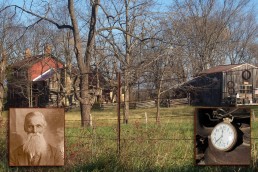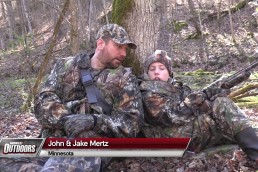Storytime with Uncle Ray: The Dance
SHARE THIS POST
There is a place in the Missouri Ozarks where a spring-fed stream winds its way past an ancient Ozarks Glade. It’s met by a steep ridge, and bordered by the remnants of a split-rail fence running the length of an old hand-cleared field. Where the old pasture greets the base of the ridge, two hollers come together just above the crown of the pasture. There on a small-timbered bench, towers a giant, old oak tree—majestic and old as the hills themselves.
Rest your back against the huge base of that old oak in the springtime and face the open glade and narrow corner of the wildflower-filled pasture, and you’re in one the finest places in all of America to kill an old, long-spurred gobbler.
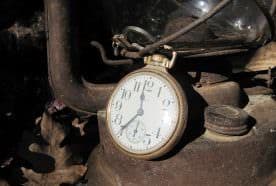
I know, because I’ve done so many times as a boy and man. And, from stories told, my great grandpa, grandpa and my dad also killed hook-spurred gobblers from that very same oak. This Ozarks creek bottom, glade and field edge always have produced these gobblers; it is a magical place, sacred ground and is the turkey’s strutting ground.
I’m very fortunate to hail from a family rich in turkey hunting tradition. My ancestors came to the Ozarks from Pendleton County, Virginia, around 1830, and settled just west of Potosi, Mo., bringing with them honed hunting skills obtained from generations living in the mountains.
During the late 1800s, my great grandfather moved his family from the Eye settlement west of Potosi to farmstead at the base of Johnson Mountain in Iron County. My grandpa would later move to the same home and farmhouse where my dad was born and raised.
Pausing to catch my breath in the pre-dawn darkness, I enjoy a lively serenade from the choruses of whippoorwills. It’s 1966, Sunday morning, 4:30 a.m.—Missouri spring turkey season. As a 13-year-old boy, I’m delighted grandma has allowed me to miss church service to go turkey hunting.
Finally reaching the junction of two ridges at the head of sawmill holler, I pause to ease the pain in my burning legs. In the dim glow of my kerosene lantern, I check the time on my grandpa’s pocket watch, the same ones I carried up this mountain on my first turkey hunt back in 1962.
Just maybe, this year I’ll kill a spring gobbler without having an absolute nightmare; for my first gobbler back in 1962, I not only bumped birds, but I missed way too many gobblers to even count.
Finally reaching my predetermined destination just below a long ridge, I sit down against a big tree, load the old hammer gun and blow out the flame in the old rusty lantern. As first light streaks the eastern sky, whippoorwills go silent and a barred owl sings, “Who cooks for you, who cooks for you all?” And, somewhere on Pruitt Mountain, I hear my first gobble of the season.
As song birds and crows greet a new day, gobbling increases from every hill and ridge around the farm—but here. I question my decision to hunt the Pruitt side of the farm. Maybe I should go to one of the gobbling turkeys? However, I quickly change this thought, as two gobblers rattle from the long ridge above me.
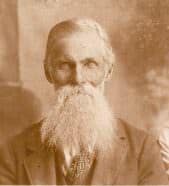
Clutching my grandpa’s old hammer double barrel, I move quietly toward one of them, set up, yelp with my voice and follow with hen yelps from my homemade corn cob slate.
The turkey responds, but to my regret, is steadily moving away. Panic sets in.
But I remember grandpa’s words: “You’re always in too big a hurry boy; slow down, turkeys aren’t going anywhere. They live there, so let things unfold, enjoy the woods and the turkeys will come.”
Throwing out another series of calls, I slouch low against the tree and dig out one of grandma’s homemade jelly biscuits to quell the hunger pains. As the warm, morning sunlight comes it is difficult to keep my eyes open. And with my chin now on my chest, I drift off to sleep.
Suddenly, a noise awakens me.
I hear something moving in the leaves behind me, turning slowly. I see a gray-haired man in a felt hat and bib overalls. I notice he is a bit on the skinny side, and has a narrow, weathered, deep-lined face. The old turkey hunter is carrying a well-worn double-barrel hammer gun, and I notice the stock has a small chalked area for the cedar scratch call he’s holding in his right hand.
The old man eases closer, pauses, leans against my tree.
“Boy, you ain’t gonna to kill that old warrior sitting here,” he says softly. “This is his roost. He leaves here right after first light, besides you’re on the wrong side. If you’re gonna kill that old long-spurred turkey now, you gotta go to where he does ‘the dance.’”
“What’s the dance?” I ask, with a slight smile.
“It’s where the boss gobbler does the mating dance—where he struts, a place the morning sun reflects off his feathers; a place where he can be seen and heard. Always a place with good nesting cover and water for the hens; a place he courts the hens and holds the dance. And boy, you really don’t want to be late for the dance.”
Are you enjoying this post?
You can be among the first to get the latest info on where to go, what to use and how to use it!
“Where is this place?”
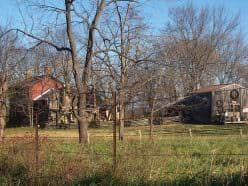
“Go over toward the old lease, turn east at the corner of the split rail, stay low in that small holler, go to the corner of the pasture, crawl up to that huge oak right close to the glade just off the corner of the old field—that’s where your gobbler goes to do the dance.”
Suddenly, I jump as a squirrel chatters and a crow screams right above me, opening my eyes, and realizing I have fallen asleep. Quickly looking around, I see there is no one; all is quiet as I realize it was all just a dream.
I gather myself. I pick up the lantern and my gun and turn to walk back down to the farm.
But curiosity gets the best of me. I stop, turn around and walk toward the old lease.
Staying low in the holler, I find that old oak, just like in my dream. Crawling to its base, I set up, load the old gun and scratch out a few yelps on my corn cob slate.
A booming gobble then rifles back from just across the glade.
Dropping my call, with shaking hands I raise my gun. Unexpectedly, a small, brown hen appears to my left, yelping as she comes. When I cut my eyes back toward the glade I see a huge gobbler with head bobbing, rocking from side to side with beard swinging, as he charges toward the glade, and me.
Waiting until he crosses the glade and steps into the corner of the field, I follow him with the barrel; I aim the old gun and pull the trigger. The old, long-spurred warrior is now flopping in the middle of the wildflowers, and the little hen cackles loudly as she flies away. Quickly, jumping to my feet on shaky legs, I run out and grab that old gobbler by the feet and hurry down the holler to the old farmhouse.
Just returning from church service, grandma greets me at the house. She admires my gobbler, but quickly scolds me on how grandpa was just about to come looking for me, and how much they were worried.
I excitedly tell her my story on how I fell asleep up on the big ridge, and about the old man in my dream. She listens at first then interrupts, laughing out loud while shaking her head. She tells me to hang the gobbler in the smokehouse and clean up for Sunday dinner over at my great aunt Marie’s house.
While sitting at the large dinner table, I just happen to look above her antique china cabinet. I notice a heavy-framed picture. It is of an old, thin man with a weathered face.
All of a sudden, I realize it—it’s the old man from my dream.
“Who is that man in the picture?”
“That’s your great, great grandpa Noah Eye,” my aunt says. “He was quite the turkey hunter. He knew turkeys and the hills better than anyone. He was born back in 1857, and passed in 1935 … Why do you ask?”
Without taking my eyes away from the picture, I stammer, “ … Because that’s the man I talked to this morning—because that’s the man who told me about the dance in my dream.”
Everyone at the table laughs out loud as my grandma, in her cackling, laughing voice says, “There you go again, boy! You have such a wild imagination. Now, clean up your plate. We’re having blackberry cobbler for dessert.”
Ray Eye is a MidWest Outdoors hunting instructor. He was raised in the turkey-rich hills of the Missouri Ozarks, and is considered the dean of America’s professional turkey hunters. It’s less widely known that he is an expert hunter for many other species. Eye has produced an online course, “Calling is Everything,” that details how to call turkeys at any season of the year. Find it at eyesontheoutdoors.com.
MWO
SHARE THIS POST
Did you enjoy this post?
You can be among the first to get the latest info on where to go, what to use and how to use it!
